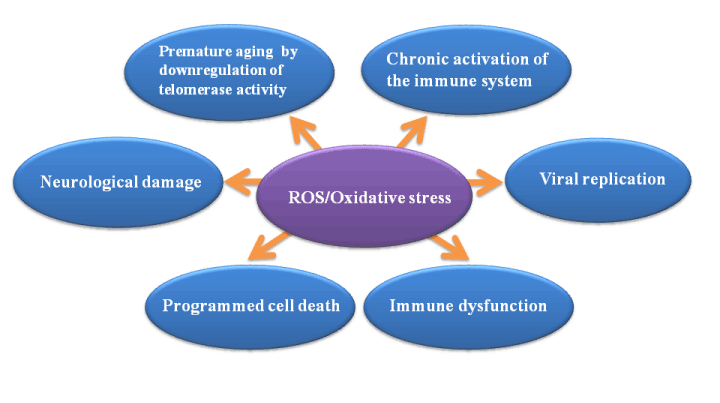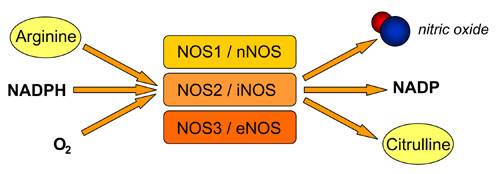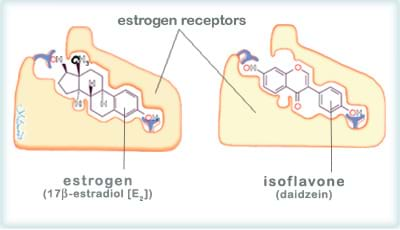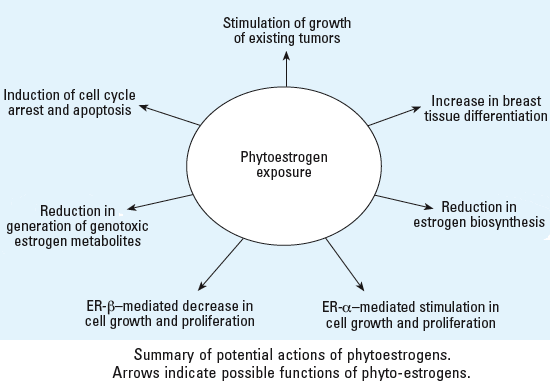Since ancient times, a variety of health benefits have been attributed to a moderate consumption of some beverages such as wine. This is why everyone is aware of the proverb: “Good wine makes good blood”, which mainly refers to positive cardiovascular effects of wine.

Several studies have demonstrated that the intake of alcoholic beverages can produce many positive effects on human health, in particular on cardiovascular and nervous systems. By contrast, alcohol abuse is related to a large number of medical and social problems, including the alcohol dependence syndrome and several chronic diseases, first of all liver cirrhosis.
So, it is crucial make a distinction between moderate consumption, heavy and binge drinking. What constitutes a moderate and healthy level of consumption varies by individual according to age, gender, genetics, weight, stature, drugs use and other concomitant factors, first of all the intake of food. Women, in general, tend to absorb alcohol quicker than men due to their different levels of digestive enzymes, so their moderate levels of consumption tend to be lower than a male of equal age and weight. Some doctors define "moderate consumption" as one glass (150 ml) of wine per day for women and two glasses (300 ml) per day for men. Healthy effects of wine are greater in combination with a healthy diet: the health benefits associated with the Mediterranean diet, which combines moderate wine and beer consumption with a diet rich in fruits, vegetables and whole grains, suggest that wine polyphenols have synergistic effects with phenolic compounds found in other groups of food. Wine consumption can't replace a healthy lifestyle; however, light-to-moderate wine drinkers, without medical complications, may be assured that their wine consumption is a healthy habit.
COMPOUNDS OF WINE
Beneficial effects of wine have been attributed to the functions of its components, in particular polyphenols, which include a large group of several hundred chemical compounds that affect taste, aroma, color and mouthfeel of wine. Wine polyphenols are a mixture of flavonoids and non-flavonoids compounds.
The group of flavonoids includes:
- Flavonols
- Anthocyanins
- Condensed tannins
- Flavanol monomers (catechins)
- Flavanol polymers (proanthocyanidins)
Among non-flavonoids there are:
- Hydroxycinnamates
- Hydrolyzable tannins
- Phenolic acids, such as benzoic, cinnamic, caffeic acids
- Stilbenoids (resveratrol)
(Phenolic content in wine)
Chemical structure of wine polyphenols
Phenolic acids are largely present in the pulp, anthocyanins and stilbenoids in the skin, catechins, proanthocyanidins and flavonols in the skin and in the seeds. The concentration of phenols is increased by exposure of grapes berries to sunlight and the proportion of different phenolic compounds varies according to the type of vinification. It is known that red wine has greater health benefits and this is because this type of wine has a higher content of polyphenols than the white one. During the wine making process, red wine is macerated for weeks with the skin, which is the part of the grape with the highest concentration of phenolic compounds, in particular flavonols, anthocyanins and proanthocyanins. Phenols in white wine derive essentially from the pulp and they are mainly represented by phenolic acids with lower amounts of catechins and stilbenoids.
During wine aging, wine simple phenols are transformed into complex molecules deriving from the condensation of catechins, anthocyanins and proanthocyanins: this process leads to the formation of new pigments resulting in a modification of wine color. The process of oak aging can add other phenols to wine, most notably vanillin and hydrolyzable tannins: these tannins present in oaks derive from lignin structures in the wood and they help to protect wine from oxidation. (Phenolic content in wine)
Polyphenols have lots of important functions, in particular:
- they can act as anti-inflammatory, antiviral and antibacterial agents
- they have antioxidant properties
- they may be involved in protection against cancer, for example reducing DNA strand breaks in peripheral leukocytes after a regular moderate consumption of red wine (Single and repeated moderate consumption of native or dealcoholized red wine, 2005) and acting as antimutagen, antimetastatic, antiangiogenic, antiproliferative and proapoptotic agents (Wine, beer, alcohol and polyphenols on cardiovascular disease and cancer, 2012)
- they reduce the risk of developing cardiovascular diseases, by decreasing blood pressure, inhibiting the oxidation of LDL, improving endothelial function, increasing HDL-cholesterol levels, inhibiting platelet aggregation, reducing cell adhesion (Wine, beer, alcohol and polyphenols on cardiovascular disease and cancer, 2012)
- they are involved in neuroprotective mechanisms.
The levels of principal phenolic classes (mg/L) in red and white wine
| Phenol class | White wine | Red wine |
| Nonflavonoids |
| Hydroxycinnamates | 130 | 60 |
| Benzoic acids | 15 | 60 |
| Hydrolyzable tannins | 100 | 250 |
| Stilbenoids (resveratrol) | 0,5 | 7 |
| Total mg/L | 245,5 | 377 |
| Flavonoids |
| Flavanol monomers | 15 | 100 |
| Condensed tannins | 25 | 1000 |
| Flavonols | - | 100 |
| Anthocyanins | - | 90 |
| Total mg/L | 40 | 1285 |
An other important component of wine is ethanol (CH 3 CH 2 OH), which is produced with the fermentation operated by certain species of yeast in reduced oxygen condition according to the reaction: C 6 H 12 O 6 → 2 CH 3 CH 2 OH + 2 CO 2
Toxicity of ethanol to yeast limits the ethanol concentration obtainable by brewing; higher concentrations, therefore, are usually obtained by distillation.


The role of ethanol is not well known: someone thinks it is involved in the inhibition of clotting, in particular of platelet stickiness and fibrinogen levels, in the promotion of fibrinolitic system, in the reduction of LDL oxidation and in the increment of HDL levels. On the other hand, ethanol metabolism can produce free radicals and reduce the levels of glutathione, the best cellular protection against oxidative stress. Wine, in contrast with other alcoholic beverages, has more beneficial effects due to its high content of poliphenols, that can't be found for example in liquors and distillates, in which a reduced level of phenolic compounds is accompanied by a high content of ethanol.
OXIDATIVE STRESS AND ROS
Aging is a risk factor common to a number of neurodegenerative diseases, including Alzheimer's disease and Parkinson's disease, that result from neuronal death, in which oxidative stress may play a crucial role.

Reactive oxygen species (ROS) are normally produced by immune cells, in order to sustain their antibacterial and antifungal functions, and also by mitochondrial enzymes of oxidative phosphorylation. When ROS are overproduced, they are taken in charge by various enzymatic pathways for inactivation (superoxide dismutase, catalase, cytochromes, glutathione peroxidase). The imbalance between antioxidant defense mechanisms and the intracellular production of free radicals induces oxidative stress and cell death. When ROS prevail, they accumulate and they can react with the different cell molecules such as lipids, proteins, carbohydrates and nucleic acids, leading to cell oxidative stress. Some tissues, particularly the brain, are highly exposed to oxidative damages because of their elevated oxygen consumption, their induced production of large amounts of reactive oxygen species and their low antioxidant enzyme levels. (Wine polyphenols: potential agents in neuroprotection, 2012)

WINE POLYPHENOLS AND NEUROPROTECTION
The consumption of a diet rich in antioxidants can influence the incidence of neurodegenerative disorders: this is why red wine plays an important role in neuroprotection.
Polyphenols exert their neuroprotective activity by:
- reducing the production and the accumulation of ROS, acting as free radicals scavengers
- suppressing neuroinflammation
- inhibiting oxidation of LDL
- preventing DNA damages
- inhibiting activation of microglia and/or astrocytes associated with the release of the mediators linked to the apoptotic death of neurons
- acting as modulators of prosurvival genes and as promoters of cellular growth
(Wine polyphenols: potential agents in neuroprotection, 2012)
Polyphenols protect cell constituents from oxidative alteration and thus limit the risk of developing degenerative disorders induced by oxidative stress: they can do that thanks to their antioxidant effects and to their ability to improve endothelial function. A crucial role is played in particular by resveratrol.
The endothelium has a crucial function in vascular health by regulating several vasorelaxing factors such as nitric oxide (NO), that plays an important role as vasodilatator, cellular messenger, platelet inhibitor (Modulation of haemostatic function and prevention of experimental thrombosis by red wine in rats: a role for increased nitric oxide production, 1999). The beneficial mechanisms of red wine polyphenolic compounds mainly involve the release of endothelial NO through an increase in calcium levels and activation of the PI3K-Akt pathway in endothelial cells. Red wine polyphenolic compounds may also regulate NO activity at the level of endothelial nitric oxide synthase (eNOS), an enzyme expressed in endothelial cells and blood vessels. (Wine polyphenols: potential agents in neuroprotection, 2012)

Major effects of NO production concern cardiovascular system and they guarantee a great oxygenation of the brain and a reduction of ROS levels. So, chronic upregulation of eNOS by polyphenols might constitute a preventive approach to reduce tissue injury associated with cerebral ischemia: for example, results indicate that resveratrol protects the spinal cord from ischemia-reperfusion injury by increasing NO release and decreasing oxidative stress. So, resveratrol-induced neuroprotection is mediated by both antioxidant- and NO-promoting properties. (Wine polyphenols: potential agents in neuroprotection, 2012)

RESVERATROL AS A PHYTOESTROGEN
Phytoestrogens are nonsteroidal plant-derived compounds that pass through cellular membranes, bind to the estrogen receptor (ER), a member of the nuclear receptor superfamily, and activate the transcription of estrogen-responsive target genes. A common phytoestrogen is resveratrol, that binds to ER and modulate its activity at concentrations comparable to those required for its other biological effects. The interaction of resveratrol with the estrogen receptor is possible due to its structural similarities with diethylstilbestrol, a synthetic estrogen, and with estradiol. There are two variants of the estrogen receptor, alpha (ER-α) and beta (ER-β), but resveratrol binds with higher affinity to ER-α.


Resveratrol competes with estradiol for binding to the human estrogen receptor and it activates the expression of estrogen-responsive reporter genes in several different human cell lines: this activation is inhibited by estrogen antagonists, such as tamoxifen. The complex resveratrol-ER into cellular nucleus binds to promoter regions of VDR genes, leading to upregulation of the synthesis of vitamin D receptor (VDR), whose number increases on cellular surface: in this way, the cell will have a higher response to vitamin D stimulation.
Resveratrol produces greater maximal transcriptional activation than estradiol, but this superagonism is not seen in all cell types, because this phytoestrogen can act as estrogen agonist or antagonist: for example, resveratrol produces two to four times greater activation than estradiol in breast cancer cells but less activation than estradiol in ovarian carcinoma cells. So, the effects of resveratrol may vary depending on the target gene as well as the cell type. The different tissue distributions of the estrogen receptors α and β might contribute to the different effects of various estrogen receptor ligands, including resveratrol. In addition, expression of different transcriptional coactivators and corepressors in various tissues and the ability of different ligands to induce various conformations of the estrogen receptor may result in ligand-specific activation of certain genes. It is also possible that in some cell types resveratrol produces superagonism by activating additional signaling pathways that converge on estrogen receptor-mediated transcription. (Resveratrol, a polyphenolic compound found in grapes and wine, is an agonist for the estrogen receptor, 1997) Some studies have shown that combined treatment with phytoestrogens (and the consequent increment of VDR number on the surface of cancer cells) and 1,25-dihydroxyvitamin D3 might be effective in both cancer prevention and treatment, because it improves the antitumor activity of vitamin D. (The influence of isoflavonoids on the antitumor activity of vitamin D3, 2007)
Vitamin D and cancer
Researchers are exploring the nutritional role of phytoestrogens in the regulation of cholesterol and in the maintenance of proper bone density post-menopause. Evidence is accruing that these substances may have protective action against different health disorders, such as prostate, breast, bowel and other cancers, cardiovascular disease, brain function disorders and osteoporosis. In addition, phytoestrogens may also modulate the concentration of endogenous estrogens by binding or inactivating some enzymes, and they may affect the bioavailability of sex hormones by depressing or stimulating the synthesis of sex hormone-binding globulin.

WINE POLYPHENOLS AND ALZHEIMER'S DISEASE
Alzheimer's disease (AD) is a progressive neurodegenerative disorder leading to the most common form of dementia in elderly people. Its typical neuronal loss is preceded by two classical lesions, the extracellular accumulation of senile plaques, mainly composed of amyloid-β (Aβ) peptides, and the formation of neurofibrillary tangles, composed of hyperphosphorylated tau proteins, mainly located in the cortex and hippocampus, areas of the brain that are important for memory and learning. Aβ plaques, generated from deregulated proteolysis of the amyloid precursor protein, undergo accelerated Aβ oligomerization, fibril formation and amyloid deposition in a process that initiates the AD pathology. (Therapeutic potential of resveratrol in Alzheimer's disease, 2008)

Many studies have shown that moderate to mild wine consumption is associated with a low risk of AD, implying that red wine intake may have a beneficial effect against AD pathology by promoting anti-amyloidogenic mechanisms. It has been demonstrated that toxicity of amiloid-β could be attenuated by wine polyphenols, in particular by flavonols and resveratrol, which promote the proteolytic clearance of Aβ by regulating gene expression and activating plasmin. (Therapeutic potential of resveratrol in Alzheimer's disease, 2008)
Resveratrol has been shown to confer neuronal protection: by activating SIRT-1 (Sirtuin 1, a NAD-dependent deacetylase), it inhibits nuclear factor NF-κB signalling, giving protection against microglia-dependent β-amyloid toxicity. In particular, SIRT-1 induces deacetylation of p53 and/or PGC-1α: by repressing p53, resveratrol may protect neurons from oxidative damage and prevent apoptotic neuronal death; by activating PCG-1α (peroxisome proliferator-activated receptor gamma cofactor 1-alpha), it may improve mitochondrial function and aerobic capacity. PCG-1α is a protein that activates the nuclear receptor PPAR-γ, which permits the interaction of this protein with multiple transcription factors, regulating mitochondrial functions and in particular the detoxification of reactive oxygen species. SIRT-1 can also be upregulated by various biological stresses, including caloric restriction, which has been shown to prevent numerous diseases of aging in mammals such as Alzheimer's disease. (Resveratrol in prevention and treatment of common clinical conditions of aging, 2008)

There is evidence that Alzheimer's disease is caused by the accumulation of localized neuronal damage surrounding hemorrhagic mini-strokes in the vicinity. Thus, the general cardiovascular protection provided by resveratrol in the brain is another way in which it may be protective against this disease: stilbenes enhance blood flow into the brain, increasing brain oxygenation and consequently improving memory and cognitive abilities. (Wine polyphenols: potential agents in neuroprotection, 2012)
CONCLUSION
Moderate wine consumption, in particular red wine, might have some benefits on human health, for example preserving neuronal cells from degeneration and death. These effects are the consequence of the high concentration of polyphenols in wine, compounds with antioxidant activity, able to scavenge intracellular ROS, to inhibit LDL oxidation, to activate endothelial nitric oxide synthase and subsequent NO production. In addition, resveratrol offers promise for the treatment and prevention of Alzheimer's disease, but also Parkinson's disease, Huntington's disease and other neurological disorders. In conclusion, the biologically-potent polyphenols have wide-ranging effects on different biological processes in cells. While we are eagerly awaiting the results of clinical trials, more research is required to fully understand the mechanisms whereby resveratrol exerts its effects and to exclude any potential long-term adverse side-effects.